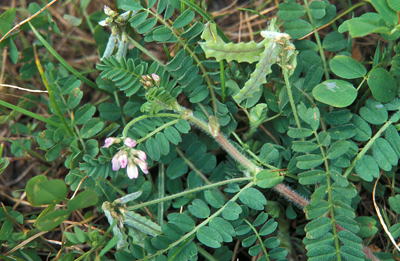Though nitrogen is an abundant element in the Earth’s atmosphere, plants can’t use it unless it’s been converted into another form. An estimated 80 percent of the nitrogen “fixed” through biological means comes from the symbiosis between bacteria in the root nodules and legume plants such as lentils and peanuts. This relationship is thought to convert some 120 million tons of atmospheric nitrogen into ammonia each year, saving farmers from having to buy billions of dollars worth of fertilizer that contains nitrogen annually. Increasing the amount of biologically fixed nitrogen could reduce the need for manufactured fertilizer by 160 million tons a year, which in turn reduces the annual need for fossil fuels to power the process by 270 million tons.

Photo: Leslie Linares, Gibraltar Ornithological and Natural History Society
Biserrula pelenicus is a deep-rooted legume species in Australia and a key sustainable farming crop that thrives in acidic soil because of its interaction with the acid-tolerant symbiont Mesorhizobium ciceri by biserrulae. By studying the symbiont, researchers hope to gain a better understanding of how nitrogen fixation process is controlled. Researchers also want to study three strains of the symbiont can fix nitrogen with varying degrees of efficiency to better understand how it interacts with legumes and hopefully use that information to develop genetically stable bacterial strains that can fix nitrogen.
Principal Investigators: Kemanthi Nandasena (Murdoch University)
Program: CSP 2009